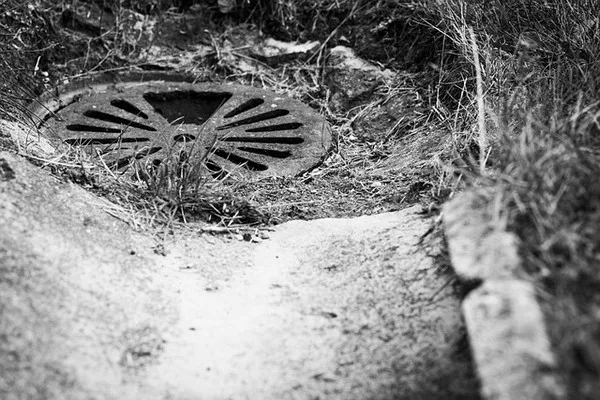The management and treatment of sewage are vital aspects of modern urban infrastructure. Without proper sewage treatment, the discharge of untreated wastewater can have devastating environmental and public health consequences. To address these concerns, sewage treatment facilities employ a range of methods to purify wastewater before it is released back into the environment. Three main types of sewage treatment processes are employed to achieve this: primary, secondary, and tertiary treatment. Each method plays a crucial role in the purification of sewage, ultimately contributing to cleaner and safer water resources. In this article, we will explore these three types of sewage treatment in detail and their significance in maintaining a sustainable and healthy environment.
Primary Treatment
Primary sewage treatment is the first stage in the wastewater treatment process, primarily aimed at removing solid materials from the sewage. This process typically involves physical and mechanical methods to separate large debris, suspended particles, and settleable solids. Primary treatment is a fundamental step in sewage treatment, as it lays the foundation for subsequent treatment processes. Here are the key components and steps involved in primary treatment:
Screening: The process begins with the removal of large debris and objects from the sewage. This is achieved using screens and grates to prevent damage to downstream equipment.
Sedimentation: After screening, the sewage undergoes sedimentation in primary clarifiers or settling tanks. In these tanks, the flow of wastewater slows down, allowing heavier particles to settle at the bottom, forming sludge.
Sludge Removal: The sludge that accumulates at the bottom of the primary clarifiers is mechanically removed. This sludge can be further treated to recover valuable resources or disposed of safely.
Primary treatment primarily focuses on reducing the pollutant load in sewage and is effective in removing around 30-40% of suspended solids and organic matter. However, it does not significantly reduce nutrient concentrations or pathogens, necessitating further treatment for complete purification.
Secondary Treatment
Secondary sewage treatment builds upon the foundation laid by primary treatment by targeting the biological degradation of organic matter and the removal of dissolved and colloidal solids. This stage of treatment is often regarded as the heart of the sewage purification process. It utilizes microorganisms, primarily bacteria, to break down the organic matter present in the sewage. Secondary treatment typically occurs in two main types: aerobic and anaerobic processes. Let’s delve deeper into these processes:
Aerobic Treatment: In aerobic secondary treatment, microorganisms are supplied with oxygen to facilitate the decomposition of organic matter. This process is typically carried out in aeration tanks where sewage is mixed with activated sludge, which is a mixture of microorganisms. The microorganisms consume organic pollutants, transforming them into carbon dioxide, water, and more microbial biomass. The resulting sludge can be further treated, disposed of, or returned to the aeration tanks.
Anaerobic Treatment: Anaerobic secondary treatment occurs in the absence of oxygen and relies on anaerobic bacteria to break down organic matter. This process is generally used for industrial wastewaters and sludges. Anaerobic digestion results in the production of biogas, which can be used as an energy source. The remaining sludge can also be further treated.
Secondary treatment is highly effective in reducing the concentration of organic matter and suspended solids, resulting in significant improvements in water quality. It can remove approximately 90-95% of organic pollutants, making the treated effluent suitable for discharge into natural water bodies or additional treatment.
Tertiary Treatment
Tertiary sewage treatment is the final stage in the wastewater treatment process, focusing on advanced purification to meet stringent environmental and quality standards. This treatment stage further reduces impurities, including nutrients (nitrogen and phosphorus), pathogens, trace contaminants, and color. Tertiary treatment is essential in scenarios where the treated effluent must meet strict discharge regulations or be suitable for reuse. Here are some common methods employed in tertiary treatment:
Filtration: Filtration involves passing the secondary-treated sewage through various media, such as sand, gravel, or membrane filters. This process removes remaining suspended particles, bacteria, and some organic matter, resulting in crystal-clear water.
Nutrient Removal: To reduce nutrient concentrations, which can contribute to issues like eutrophication, tertiary treatment may include processes like chemical precipitation, coagulation, and biological denitrification. These methods are used to remove excess nitrogen and phosphorus.
Disinfection: Disinfection is crucial for pathogen removal and public health protection. Chlorination, ultraviolet (UV) irradiation, and ozonation are common disinfection methods used in tertiary treatment.
Advanced Oxidation Processes (AOPs): AOPs involve the use of powerful oxidizing agents, such as hydrogen peroxide or ozone, to break down trace organic contaminants, pharmaceuticals, and other persistent pollutants.
Advanced Filtration: Microfiltration, ultrafiltration, and reverse osmosis are advanced filtration methods that can further purify water by removing microscopic particles and dissolved contaminants.
The application of tertiary treatment depends on the specific requirements of the treated effluent. It is often necessary for discharging into sensitive ecosystems, agricultural irrigation, industrial processes, or direct potable water reuse.
Conclusion
In summary, sewage treatment is a multi-stage process that involves primary, secondary, and tertiary treatments to remove impurities from wastewater and protect the environment and public health. Primary treatment focuses on the physical removal of solids, while secondary treatment employs biological processes to break down organic matter. Tertiary treatment is the final step, offering advanced purification to meet strict environmental standards. Each type of treatment is a vital component of wastewater management, contributing to the sustainability and cleanliness of our water resources. By understanding and implementing these sewage treatment processes, we can continue to protect and preserve our valuable water ecosystems for generations to come.

